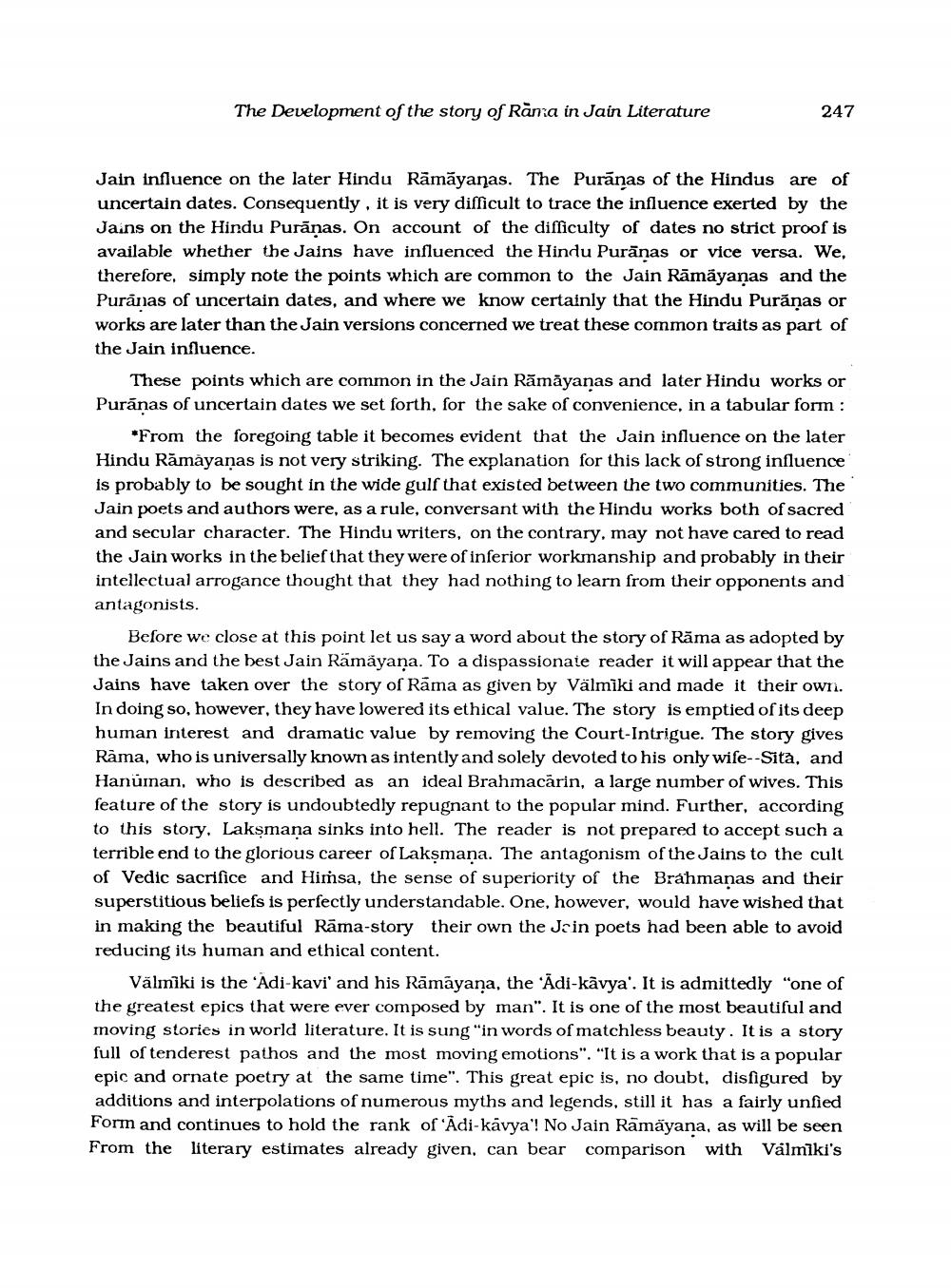________________
The Development of the story of Rana in Jain Literature
247
Jain influence on the later Hindu Rāmāyaṇas. The Purānas of the Hindus are of uncertain dates. Consequently, it is very difficult to trace the influence exerted by the Jains on the Hindu Puranas. On account of the difficulty of dates no strict proof is available whether the Jains have influenced the Hindu Purānas or vice versa. We, therefore, simply note the points which are common to the Jain Rāmāyaṇas and the Puranas of uncertain dates, and where we know certainly that the Hindu Purăņas or works are later than the Jain versions concerned we treat these common traits as part of the Jain influence.
These points which are common in the Jain Rāmāyanas and later Hindu works or Puranas of uncertain dates we set forth, for the sake of convenience, in a tabular form:
*From the foregoing table it becomes evident that the Jain influence on the later Hindu Ramayanas is not very striking. The explanation for this lack of strong influence is probably to be sought in the wide gulf that existed between the two communities. The Jain poets and authors were, as a rule, conversant with the Hindu works both of sacred and secular character. The Hindu writers, on the contrary, may not have cared to read the Jain works in the belief that they were of inferior workmanship and probably in their intellectual arrogance thought that they had nothing to learn from their opponents and antagonists.
Before we close at this point let us say a word about the story of Rāma as adopted by the Jains and the best Jain Ramayana. To a dispassionate reader it will appear that the Jains have taken over the story of Rāma as given by Välmiki and made it their own. In doing so, however, they have lowered its ethical value. The story is emptied of its deep human interest and dramatic value by removing the Court-Intrigue. The story gives Rama, who is universally known as intently and solely devoted to his only wife--Sita, and Hanūinan, who is described as an ideal Brahmacarin, a large number of wives. This feature of the story is undoubtedly repugnant to the popular mind. Further, according to this story. Laksmana sinks into hell. The reader is not prepared to accept such a terrible end to the glorious career of Lakşmana. The antagonism of the Jains to the cult of Vedic sacrifice and Himsa, the sense of superiority of the Brahmanas and their superstitious beliefs is perfectly understandable. One, however, would have wished that in making the beautiful Rāma-story their own the Jain poets had been able to avoid reducing its human and ethical content.
Välmīki is the 'Adi-kavi' and his Rāmāyana, the 'Adi-kavya'. It is admittedly “one of the greatest epics that were ever composed by man". It is one of the most beautiful and moving stories in world literature. It is sung "in words of matchless beauty. It is a story full of tenderest pathos and the most moving emotions". "It is a work that is a popular epic and ornate poetry at the same time". This great epic is, no doubt, disfigured by additions and interpolations of numerous myths and legends, still it has a fairly unfied Form and continues to hold the rank of 'Adi-kavya'! No Jain Rämäyana, as will be seen From the literary estimates already given, can bear comparison with Valmiki's




